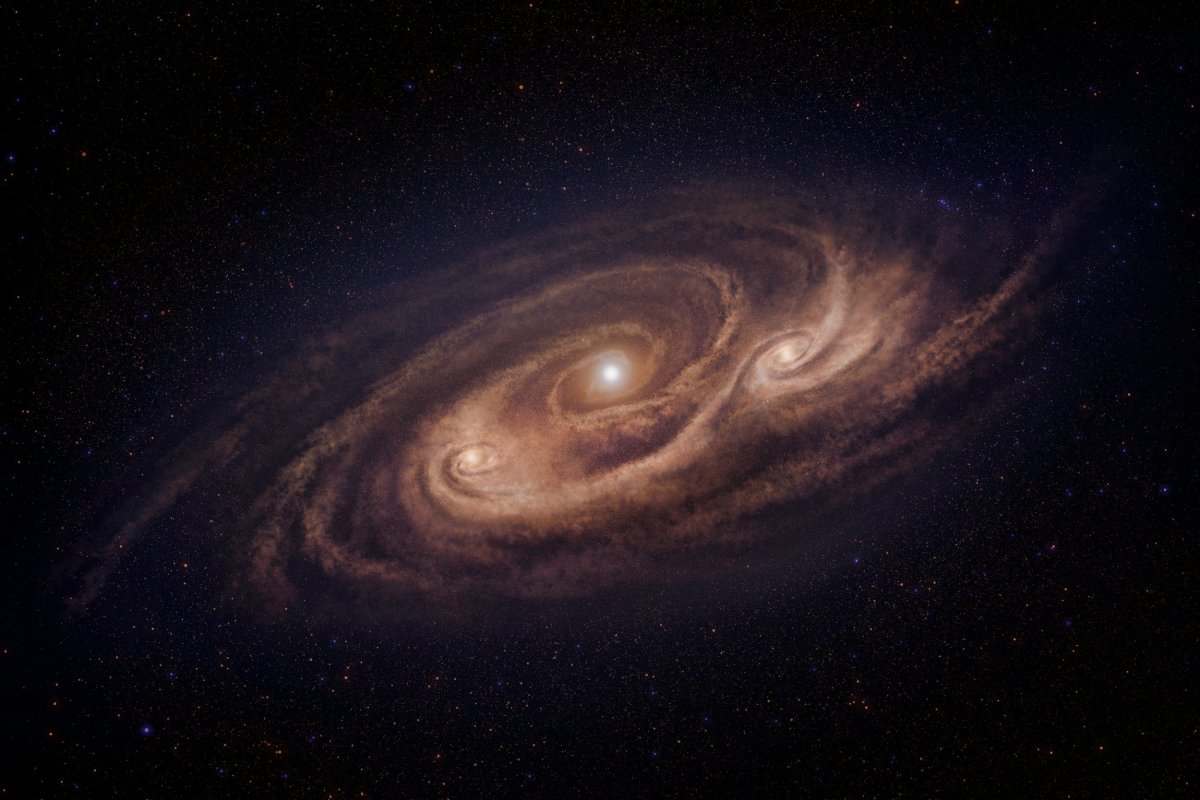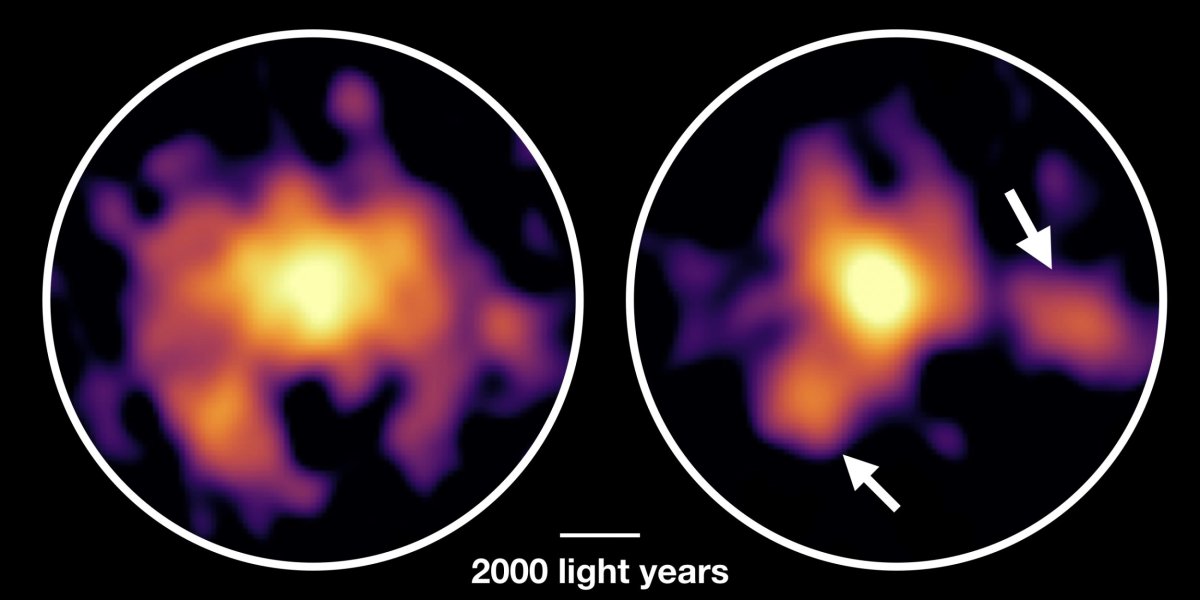A "monster" galaxy that formed when the universe was just one billion years old has been mapped by scientists for the first time—and the findings have defied all expectations.
The mystery galaxy—named COSMOS-AzTEC-1—is 12.4 billion light years away and is known as a submillimetre-bright galaxy. These are some of the brightest in the universe and are known for forming stars at an extremely fast rate. They were first discovered just over a decade ago and since then have baffled scientists—according to our models of galaxy formation, they shouldn't exist.
Now, using the Atacama Large Millimeter/submillimeter Array (ALMA) Telescope in Chile, an international team of scientists has been able to study the galaxy at the highest ever resolution, revealing previously unknown details about its structure and dynamic properties.
The research, published in Nature, indicates that the galaxy has an ordered gas disk that is highly unstable—contrary to what theoretical models predicted. Furthermore, it has two huge gas clouds located thousands of light years apart. Normally, these galaxies would have one gas cloud at the center that drives star formation.
What appears to be happening in AzTEC-1 is that the instability of the galaxy has led to runaway star formation, with the two gas clouds both producing stars. Indeed, star formation is happening at such a fast rate, the researchers predict the galaxy will have been consumed within 100 million years—a cosmological blink of an eye.

Study co-author Min Yun, professor of astronomy at University of Massachusetts Amherst, told Newsweek that studying AzTEC-1 will help them better understand our theories of galaxy formation and evolution. Our most promising theory—Lambda CDM—says the universe is shaped by cold dark matter and dark energy following the big bang. This theory says galaxies start off small and are built up over time.
"This theoretical picture very nicely explains nearly 99% of the galaxies you see in beautiful deep images of distant galaxies produced by the Hubble Space Telescope, for example," he said. "This AzTEC-1 galaxy is one of a new type of galaxies (called submillimeter galaxies) we discovered using our AzTEC instrument nearly a decade ago that are not visible in these Hubble images because they are completely obscured by a dusty cocoon that enshrouds."
There are "mini versions" of these monster galaxies located closer to us known as ultra luminous infrared galaxies (ULIRG), but these are generally formed by two galaxies smashing into each other. "The surprise for AzTEC-1 is that we are seeing this galaxy so soon after the Big Bang, when there should have been very few large galaxies to mash together in the first place, let alone needing two or more of them," Yun said.
"Worse yet, AzTEC-1 is more luminous and is forming stars at 10 times the rate of the local ULIRGs. To top that all off once again, what we were able to show for the first time using the ALMA observatory is that this galaxy is made of a nicely organized, large rotating disk of gas, rather than a giant jumble pile, as gravity and nature had only barely enough time to collect enough matter together."

So what's the answer? The team believes AzTEC-1 may be the result of two galaxies smashing into one another, igniting a period of intense star formation, but more research will be needed to understand what is happening to the galaxy. Since they were first discovered, thousands of objects like AzTEC-1 have been found and teams across the world are studying them closely.
"If these galaxies also follow the standard model, they will continue to attract and grab more stuff around them and grow ever bigger," Yun said. "The largest galaxies in the local universe are called giant elliptical galaxies, and they are often found inside galaxy clusters, which are the largest objects the nature has created in the universe. The number of these giant ellipticals we find today are about the right number as the number of AzTEC-1 like sources we find in the early universe. Of course, nature often has other tricks up its sleeves, and there might be other plausible scenarios.
"We are missing a crucial physics that governs how matter collects inside dark matter halos and how they turn into stars. We hope to expand this study using ALMA to at least a handful more of objects so that we can gain better insight into their properties and physical processes that govern them. Hopefully these insights will lead to solving the remaining puzzles of how first galaxies formed out of the Big Bang and grew to the ones we know and love today."
Uncommon Knowledge
Newsweek is committed to challenging conventional wisdom and finding connections in the search for common ground.
Newsweek is committed to challenging conventional wisdom and finding connections in the search for common ground.
About the writer
Hannah Osborne is Nesweek's Science Editor, based in London, UK. Hannah joined Newsweek in 2017 from IBTimes UK. She is ... Read more
To read how Newsweek uses AI as a newsroom tool, Click here.








